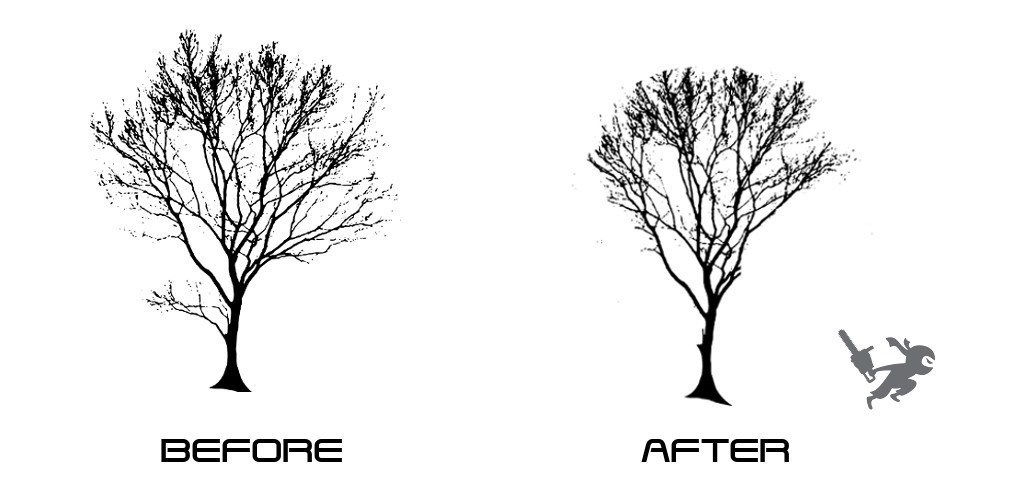Pruning is the most common tree maintenance work. Proper pruning helps to selectively remove defective parts of a tree and improves the structure of a tree, thereby contributing to the overall health and structure.
Maintenance Pruning
Proper maintenance pruning has several names, commonly called “Crown Cleaning”, “Crown Thinning”, “Crown Reduction”, or even “Crown Raising”. This involves selective removal of crossing, co-dominant, dead, diseased and dying limbs. The purpose is to establish proper branching structure to develop a stronger, healthier tree canopy.
Pruning to Clear
This pruning is used to keep a tree from encroaching too closely on a structure. The distance specified on the proposal refers to a target buffer space between a structure and the nearest smaller limbs of a tree. Smaller limbs inside this buffer space would be removed. This is especially effective in preventing mold and other fungi from growing near the building or structure. Generally, smaller trees are cleared 1-2 feet from a structure, medium shade trees 2-4 feet, and larger shade trees anywhere from 6-10 feet from a structure.
Crown Raising
Crown Raising involves removal of lower branches of a tree. The purpose of this is to provide head height clearance for buildings, signs, vehicles, and pedestrians. The resulting live crown ration should be more than 60%. Crown raising is best performed gradually over a period of years.
Improper Techniques

- Clearing too much inner foliage will adversely affect the health of a tree. Vigorous production of water sprouts on interior limbs indicates over-thinning.
- Reduction should be avoided for mature, older or stressed trees. In any case, no more than 25% of the foliage should be removed.
- Excessive removal of lower limbs should be avoided so that development of trunk taper is not effected.



